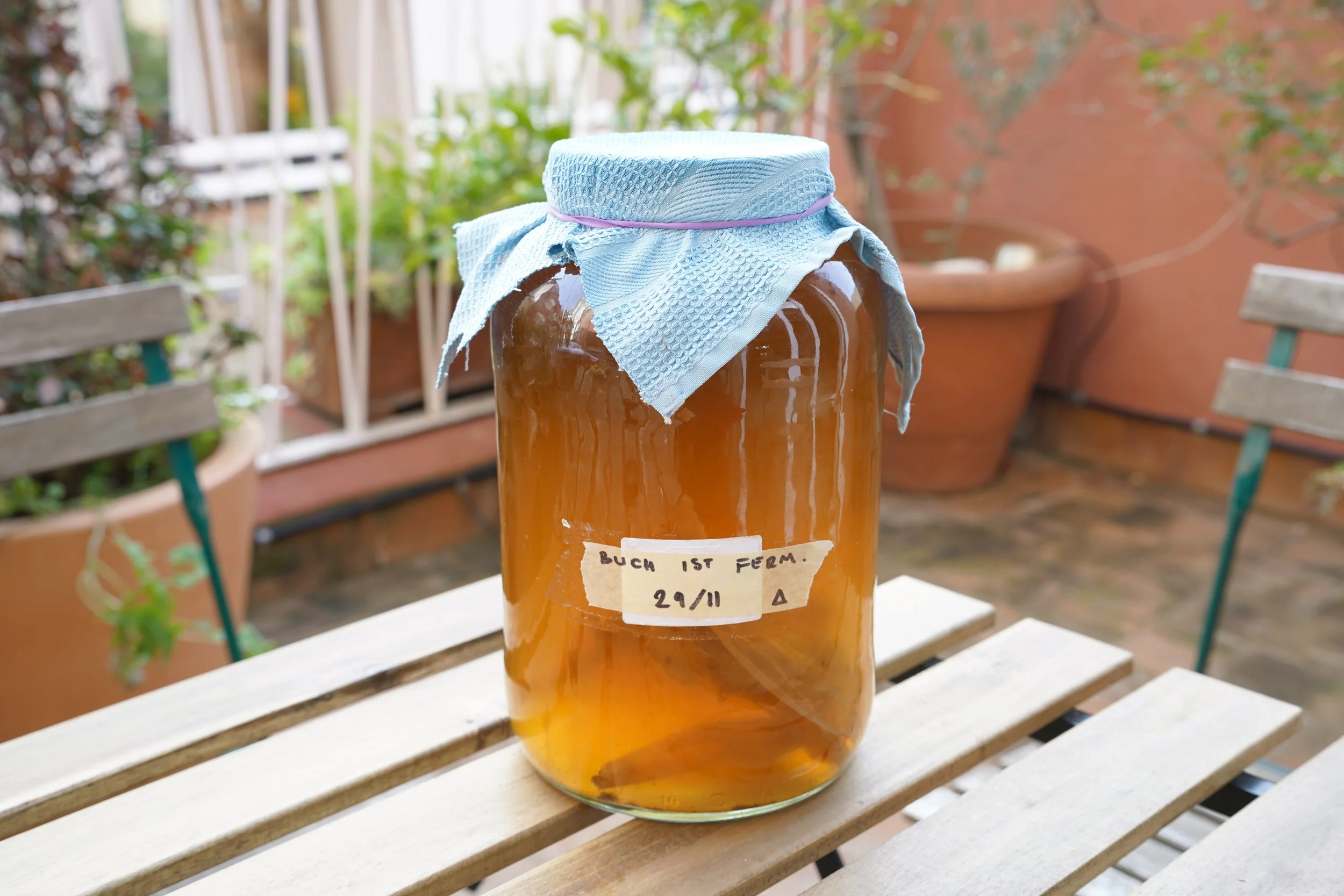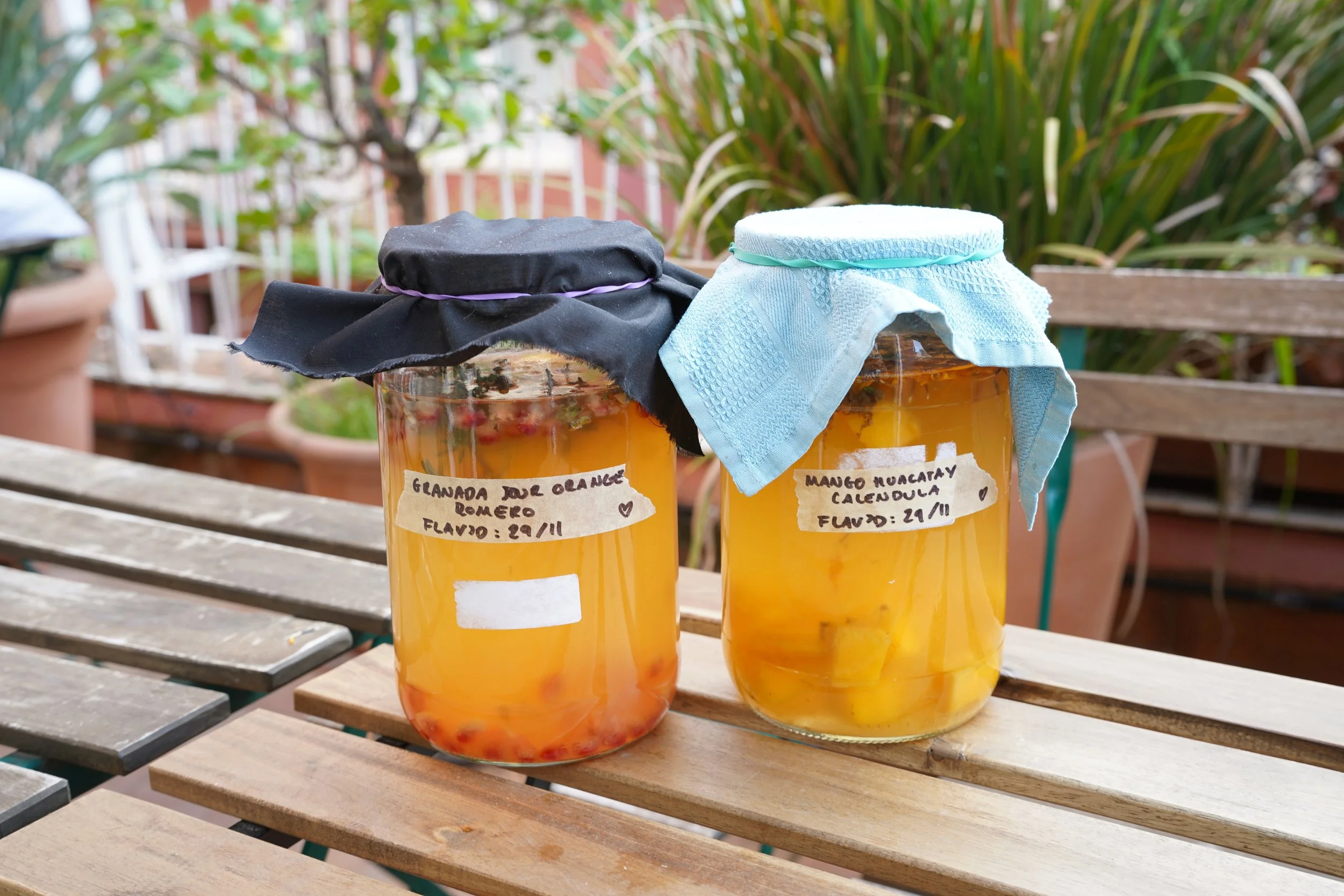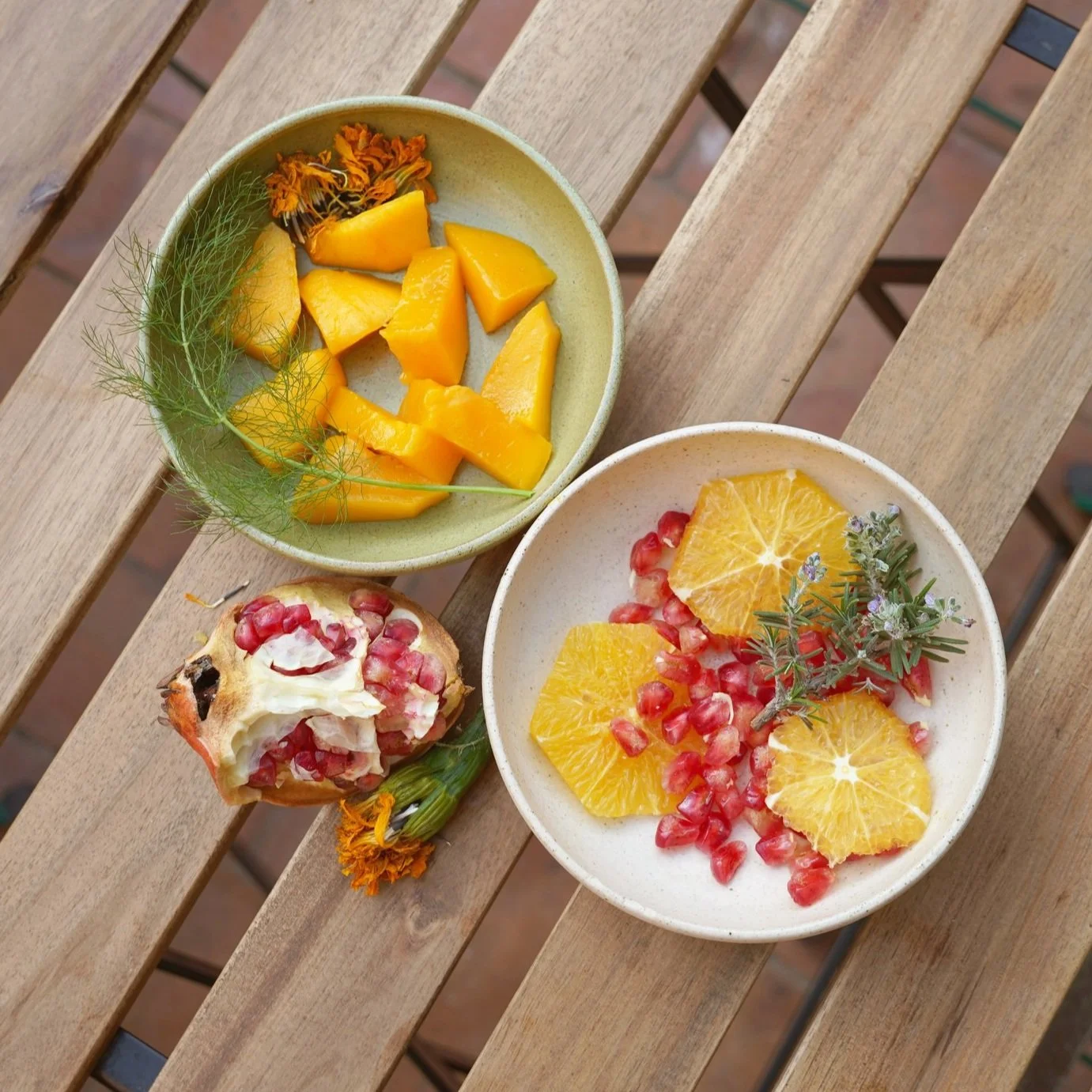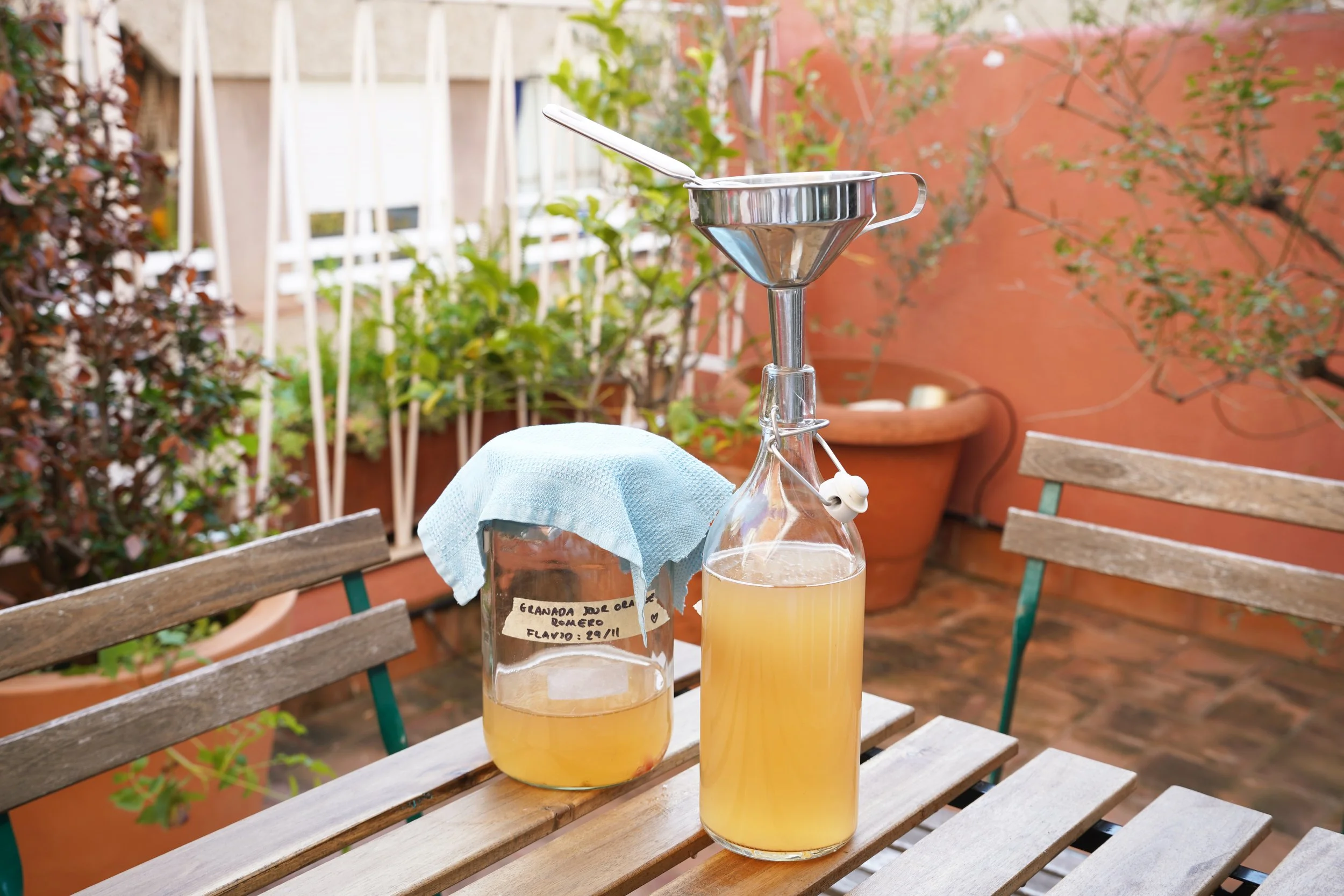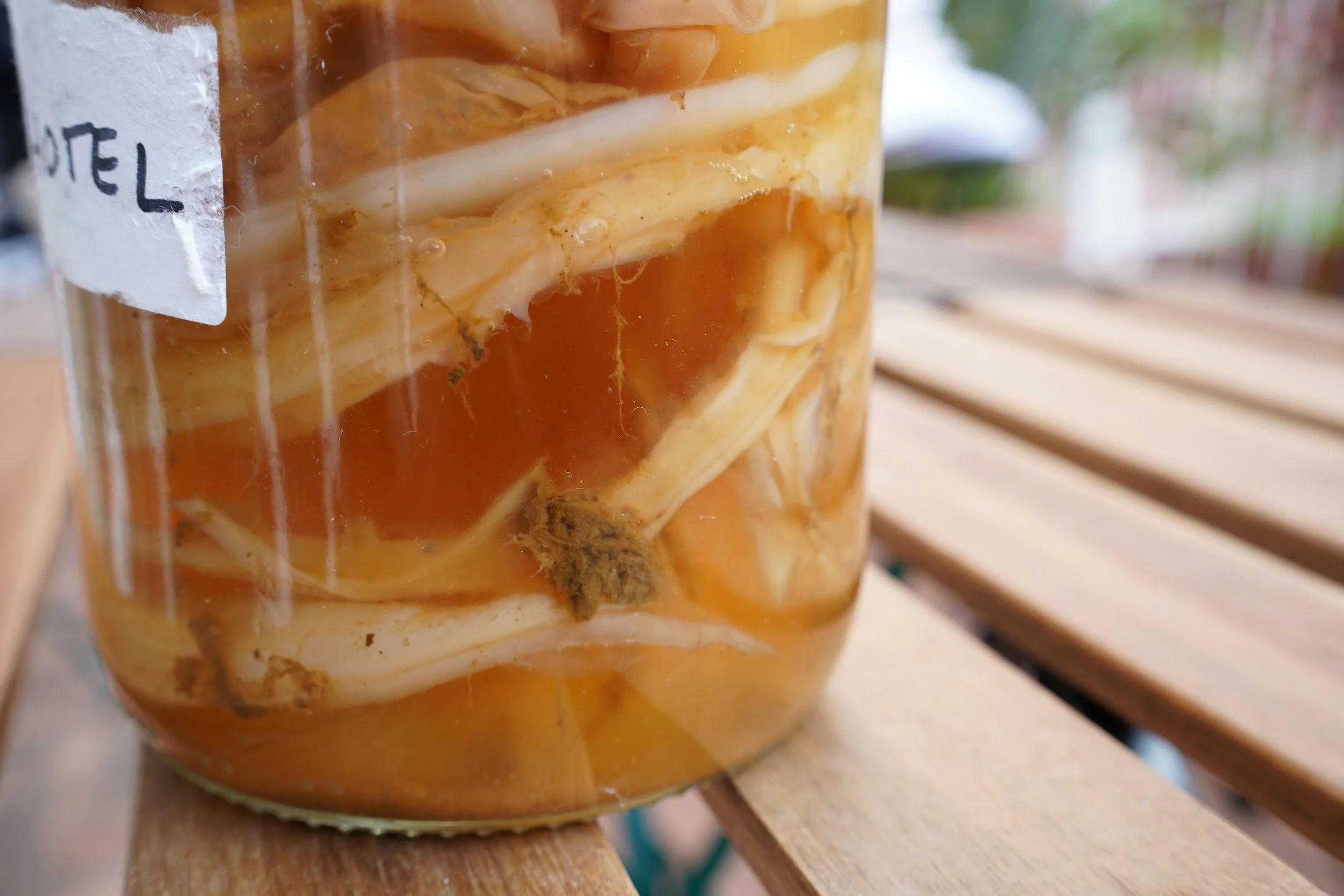how to make Kombucha
What is Kombucha?
Kombucha is sweetened tea fermented using a Symbiotic Colony of Bacteria and Yeast, SCOBY, which turns the sugar and theine (tea’s version of caffeine) into acids, carbon dioxide, and a little bit of alcohol. When it is not pasteurized, it contains probiotics that aid in gut health.
Ingredients:
SCOBY
1 cup of tea that has gone through the first fermentation already
Filtered or bottled water
Tea (green, black, white, oolong, tea with theine in it)
Sugar
1 large jar, optional 2-3 smaller jars, 2-3 bottles with a rubber seal (for carbonation)
Cloth scraps & rubber bands
Sieve & funnel
Masking tape
Preparation:
Wash your hands, jars, tools, and fruits well. Try to avoid using metal when the fermentation process has started. Make sure to label your jars with what is inside, the stage of the fermentation, and the date!
Instructions:
1. MAKING TEA.
Heat up the water, dissolve the sugar in it, and steep the tea for 4-5 minutes. Let cool completely to room temperature.
You should make about 3 liters of tea, but this depends on the size of your jars.
Use 2 teabags for every liter of water (5g-10g of tea for 1 liter of water).
60g of sugar for 1 liter of water.
If you’re SCOBY is used to a certain type of tea and you want to use another type, you have to gradually introduce the new tea with each batch of kombucha that you make.
2. FIRST FERMENTATION.
Reserving a small amount for your SCOBY hotel*, put the tea into a large glass jar along with the SCOBY and some previously fermented tea. Cover and secure a cloth to close the jar.
Leave at room temperature to ferment for a minimum of 7 days and a maximum of 20 days.
Check to see if the sugar level has gone down to what you would like. The longer the fermentation the less sugar and the more sour. This is a matter of taste.
Ambient temperature will affect the speed of fermentation: the hotter the faster and the cooler the slower fermentation will take place.
Do not cover the jar with a solid lid! Always use a cloth as kombucha needs oxygen to ferment.
3. SECOND FERMENTATION.
If you want to make kombucha again, repeat step 1 prior to this step. Reserving the SCOBY either to make more kombucha or just put it in the SCOBY hotel (from this stage onwards, you are not using the SCOBY to ferment, but a SCOBY might form in the product), you can divide up the fermented tea into smaller jars if you want to make more than one flavor. Add your flavoring. . Cover and secure a cloth to close the jar.
Leave at room temperature to ferment for a minimum of 3 days and a maximum of 7 days.
Use a cup of this fermented tea to start the first fermentation again if you are making more kombucha.
For flavoring, fruit should be about bite sized, washed, then lightly squished. You can add in herbs and spices. You can also add flavoring the the form of juice (1 cup for 1 liter).
4. BOTTLING (THIRD FERMENTATION).
This step is to carbonate the kombucha, which is optional (if you are not doing this you can chill then enjoy your kombucha immediately!). Using a sieve to separate the flavorings and put the fermented tea into a bottle. Fill only 2/3 of the bottle.
Leave at room temperature to ferment for a minimum of 3 days and a maximum of 4 days.
If the weather is really hot, do not leave to ferment for a long time and let some of the air out each day.
Refrigerate before opening.
Kombucha can be kept in the fridge for up to 6 months.
*SCOBY hotel.
Keep your unused SCOBY in a jar and feed it once every 1-3 months with some sweetened tea like that made in step 1 in the instructions above. In the fermentation process, your SCOBY will grow. You do not need to use all of it to make kombucha. Keep some in the hotel for experiments such as changing the type of tea you use.
Frequently asked questions
-
Your SCOBY should be floating after a few days of getting fresh sweetened tea. A new lightly grey white layer may even form.
-
Discard everything. If you see green, blue, or brown on your SCOBY that is mould. Never risk it. When in doubt, throw it out.
-
Yes, you can. But avoid raw honey as it contains its own bacteria that might interfere with the SCOBY. Substitute 7/8 of a cup of honey for every cup of sugar used.
Agave may not work as well as it mainly contains fructose, which is harder to break down into glucose than sucrose (normal sugar).
-
No, as these do not contain glucose.
-
Don’t worry, that is just yeast. It helps to ferment the kombucha serves as probiotics!
-
Yes, it is! You can eat it as an extra dose of probiotics. Don’t eat too much though!
-
Kombucha is not for everyone. For example, people who have small intestinal bacterial overgrowth (SIBO) do not need more probiotics in their system and should only drink kombucha if it has been pasteurized.



